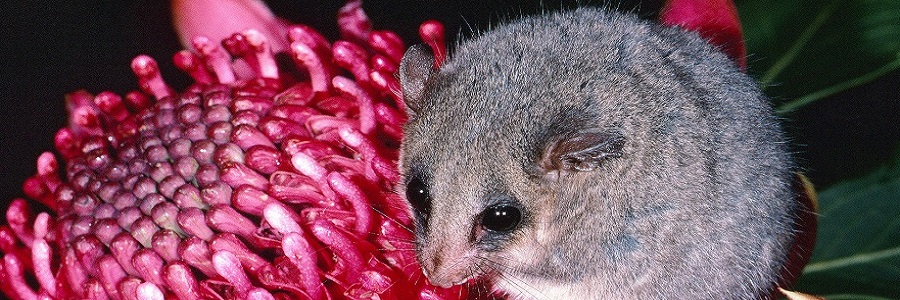Biodiversity

Biological diversity of forests at the ecosystem, species and genetic levels is a strong predictor of ecosystem health and resilience. Biological diversity includes natural patterns of ecosystems, species and gene pools in time and space.
Priority RFA information
Monitor the status and trends of forest-dependent fauna and flora, including Matters of National Environmental Significance.
Sustainability Indicators
Inform measures and report on performance in relation to the following Sustainability Indicators:
Criterion 1: Conservation of biological diversity
1.1 Ecosystem diversity
- 1.1a Area of forest by forest type and tenure
- 1.1b Area of forest by growth stage
- 1.1c Area of forest in protected area categories
- 1.1d Fragmentation of forest cover
1.2 Species diversity
- 1.2a Forest-dwelling species for which ecological information is available
- 1.2b The status of forest-dwelling species at risk of not maintaining viable breeding populations, as determined by legislation or scientific assessment
- 1.2c Representative species from a range of habitats monitored at scales relevant to regional forest management
1.3 Genetic diversity
- 1.3b Native forest and plantations of indigenous timber species that have genetic resource conservation mechanisms in place
Criterion 7: Legal, institutional and economic framework for forest conservation and sustainable management
- 7.1a Extent to which the legal framework supports the conservation and sustainable management of forests
- 7.1b Extent to which the institutional framework supports the conservation and sustainable management of forests
- 7.1c Extent to which the economic framework supports the conservation and sustainable management of forests
- 7.1d Capacity to measure and monitor changes in the conservation and sustainable management of forests
- 7.1e Capacity to conduct and apply research and development aimed at improving forest management and delivery of forest goods and services
Focus areas
- Determining a scientifically based priority suite of forest-dependent fauna and flora species
- Analysing historical data and drivers on forest-dependent species distribution and occupancy
- Simulating and forecasting species occupancy and distribution under future scenarios
- Monitoring key metrics to test and track thresholds, benchmarks and forecasted outcomes.
Evaluation questions for all RFA regions
- What is the occupancy and distribution of forest-dependent fauna and flora, and what are the predicted trajectories?
Monitoring activities
- Baselines, drivers and trends of species occupancy and distribution
NSW Forest Monitoring and Improvement Program
Department of Planning, Industry and Environment, Macquarie University, University of New England, and 2rog Consulting
Timing: 30 June 2020 to 30 June 2021
More details here - Baselines, drivers and trends of forest extent, condition and health
NSW Forest Monitoring and Improvement Program
Spatial Vision, NSW DPI Forest Science Unit, RMIT, University of New England, PF Olsen, University of NSW, Forestry Corporation and the NSW Department of Planning, Industry and Environment
Timing: 24 June 2020 to 30 June 2021
More details here - Saving our Species
Department of Planning, Industry and Environment, Environment, Energy and Science – various projects for various species
Timing: 1 July 2016 to 30 June 2021
More details here - Saving our Species (SOS) species distribution modelling
Department of Planning, Industry and Environment and Macquarie University
Timing: June 2021 - Wildcount
Department of Planning, Industry and Environment, Environment, Energy and Science
Timing: 2012 to 2022
More details here - Biodiversity Indicators Program
Department of Planning, Industry and Environment, Environment
More details here - Monitoring fauna in forests with acoustic technology in northern NSW
NSW Forest Monitoring and Improvement Program
DPI Forest Science, Forestry Corporation of NSW
Timing: up to 2021
More details here - Monitoring key habitat features
Coastal IFOA Monitoring and Improvement Program
More details here - Monitoring species occupancy
Coastal IFOA Monitoring and Improvement Program
More details here - Monitoring specific fauna species
Coastal IFOA Monitoring and Improvement Program
More details here - Monitoring specific flora species
Coastal IFOA Monitoring and Improvement Program
More details here
Research
- Fauna call recognisers
NSW Forest Monitoring and Improvement Program
NSW Department of Primary Industries, Queensland University of Technology (QUT), NSW Forestry Corporation and Victoria University of Wellington
Timing: 2020-2021
More details here - Monitoring fauna in forests with acoustic technology in northern NSW
NSW Forest Monitoring and Improvement Program
DPI Forest Science, Forestry Corporation of NSW
Timing: Up to 2021
More details here - Using technology to detect wildlife and habitat for forestry operations
Coastal IFOA Monitoring and Improvement Program
Timing: end 2021 - Koala research program
Funded by the Department of Planning, Industry and Environment
Australian National University, University of Western Sydney, NSW DPI
Timing: 2019-2021
More details here - Koala and habitat response post-fire
NSW Forest Monitoring and Improvement Program
Australian National University, University of Western Sydney, NSW DPI
Timing: By July 2021 - Koala and habitat response to forestry rule sets
Coastal IFOA Monitoring and Improvement Program - Effectiveness of species and habitat surveying and modelling on state forests
Coastal IFOA Monitoring and Improvement Program
See research priorities.
Outputs
Co-ordinated state-wide monitoring projects.
Data sharing portals established and operating including:
- BioNet
Department of Planning, Industry & Environment – Environment, Energy and Science - Science, Economics and Insights Division – Remote Sensing and Landscape Science branch
Activity: Repository for biodiversity data in NSW, including species sightings, systematic flora surveys, threatened biodiversity, and vegetation classification and maps
Timing: 1984 – Ongoing
More details here - SEED (The Central Resource for Sharing and Enabling Environmental Data in NSW)
Department of Planning, Industry & Environment – Environment, Energy and Science - Science, Economics and Insights Division – Economics, Data Analytics and Insights branch
Activity: Contains publicly accessible land, air and water data from NSW Government agencies, including species sightings, vegetation change, vegetation mapping, Ramsar wetlands
Timing: 2016 – 2027/28
More details here
Collaboration between agencies on shared program.
Reports detailing results of programs.
